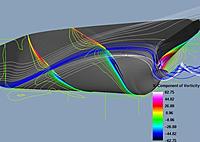Yesterday I received issue 30 of Make Magazine, and on the cover of the magazine there was a big "RC Stunt Plane".
It seems a super-cheap platform on which building a frame for testing arduplane on: the frame is basically extruded polystyrene insulation board with a reinforced area to host all electronics and motor.
For those who haven't received the issue yet, here is the link to the page with the step by step instructions: http://makeprojects.com/Project/-The-Towel-R-C-Stunt-Plane/2042/1
This project has been developed by the The Brooklyn Aerodrome rc plane club, and besides the tutorial on MakeProjects you can look on their site a lot of other video tutorials, and see the updated part list.
Personally, now that I have 2 APM (v1 and v2) I could use the old one to build a plane, and I was wondering if that frame was good enough for using with the ardupilot or was too open for hosting it.
But I'll try collect some spare parts I have and see if I can make it fly: only big problem is that in Europe house are built "properly" :) , so that kind of polystyrene will be pretty difficult to find around.
But I'll try and see if I can keep you updated with fitting the APM on this frame.
Comments
Otto Dieffenbach has a posting showing a shape that reduces prop slot noise. There's a video as well. If for no other reason watch it to see his flying duck model!
http://www.rcgroups.com/forums/showthread.php?t=1608266
My copy arrived about 3 weeks ago and this article was the first to get thumbed over repeatedly.
I took the article reference to FMS to be an form of certification that the site/software was bona fide and would not cause me issues. That was a correct decision. One cheap $12 RC sim box later (hacked to work as US Mode 2) and I was busting planes, helicopters, and quads virtually.
The quadrotor model has been building muscle memory... except it does 3D. Inverted hovering with a quad just looks and feels weird (take that auto-tracking camera gimbal!).
The Towel type of aircraft do not pretend to be anything other than they are, a quick build to possibly introduce newcomers to the hobby or to use up some bits and pieces of R/C gear in your stockpile, or just FUN with no large $$ output.
I would put the APM in a *stable* almost uncrashable aircraft platform, not one meant to be disposable. Then again, how many quads are stable before all the tuning is finished?
The noise is sort of a safety feature so I never sought to minimize it. Mount on the front and it will just whistle but likely to get bent prop shaft or broken props on landing.
The mugi was part of the inspiration for the Towel. It just took to long to build. Way too complex for a quick build.
That looks very like my fav of the same http://www.mugi.co.uk free plans are there.
We built a 3 metre one about 5 years ago mucho fun and flipping heavy.
To hush a wing put the motor at the back and make sure there is a gap.
1) You launch out of your hand without much of a toss. See
http://youtu.be/vRDb83NWGZs
2) 5mm coroplast is pretty thick and heavy. Some sort of spar might help.
3) You can definitely build better flying planes but probably not in an afternoon. The goal of the design was to minimize cost, build time (and complexity), be reasonably safe if it hit something--all the hard bits are behind crushable foam.
4) I have flown it with autosabilizing gear. Flew really well and was an excellent way for beginners to fly--just let go of the sticks and the wings/nose would level. Also a nice way to night fly.
5) If anyone in the new york city area wants to try an autopilot I have plenty of airframes. breck@brooklynaerodrome.com
A friend and I built one last weekend out of 5mm coroplast. It is easy to build, but there's not much else desirable about it. One issue is that a single layer of coroplast will flex too much without any reinforcement, and if you use tape hinges for the elevons this can lock up your control surfaces in a turn. There's some discussion that building the body out of foam will help resolve that issue. In the air its difficult to launch and easy to stall, and as Robert says, you'll end up crashing so much that you probably don't want to risk your APM.
There are a lot of better options for DIY planes using cheap materials. Coroplast flying wings in the spirit of the dazi or spagi take a little more effort to build up the spar and fold over the airfoil. Its worth the effort, though - they fly much nicer and they're more durable.
A lot of guys at my field fly these things. The are super simple, and fly reasonably well considering, but I'm not a big fan.
The biggest problem is they are loud things. It's incredible really. They are louder than an unmuffled 2-stroke engine. I think it's because of an interaction between the propeller vortex and the slot that it is sitting in.
They're also difficult to launch because there's no great way to hold them. You can't push it from behind really. I've seen them sort of grab a wingtip and throw them sort of like a Frisby. Or, they use this catapult-like contraption. Just two rails, and the motor is the only thing pushing it, but they are barely at flying speed by the time they run out of rail.
My opinion is that you will end up crashing a lot. While that's OK because the airframe is cheap, you'd eventually destroy your APM.